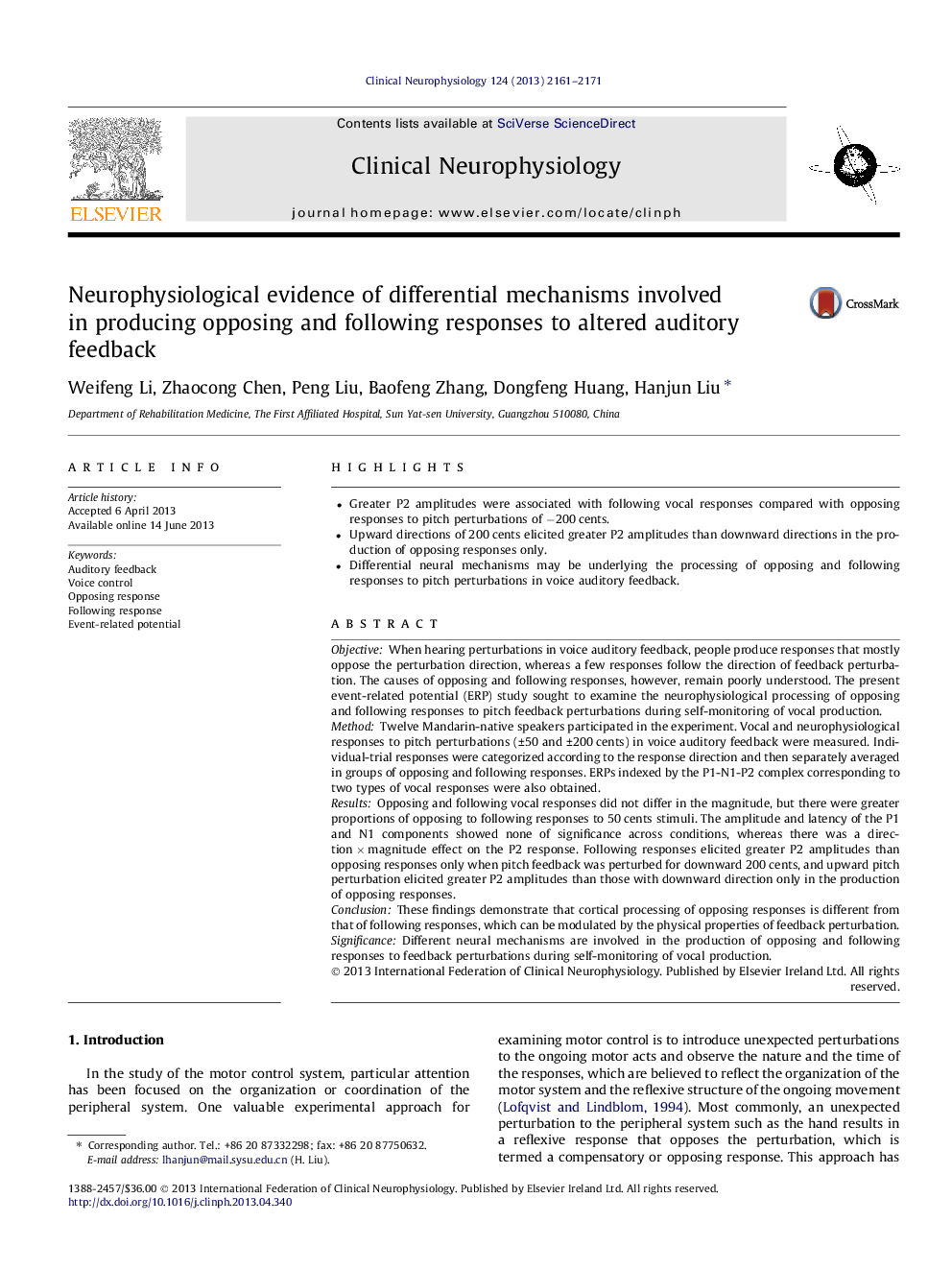| Article ID | Journal | Published Year | Pages | File Type |
|---|---|---|---|---|
| 3043318 | Clinical Neurophysiology | 2013 | 11 Pages |
•Greater P2 amplitudes were associated with following vocal responses compared with opposing responses to pitch perturbations of −200 cents.•Upward directions of 200 cents elicited greater P2 amplitudes than downward directions in the production of opposing responses only.•Differential neural mechanisms may be underlying the processing of opposing and following responses to pitch perturbations in voice auditory feedback.
ObjectiveWhen hearing perturbations in voice auditory feedback, people produce responses that mostly oppose the perturbation direction, whereas a few responses follow the direction of feedback perturbation. The causes of opposing and following responses, however, remain poorly understood. The present event-related potential (ERP) study sought to examine the neurophysiological processing of opposing and following responses to pitch feedback perturbations during self-monitoring of vocal production.MethodTwelve Mandarin-native speakers participated in the experiment. Vocal and neurophysiological responses to pitch perturbations (±50 and ±200 cents) in voice auditory feedback were measured. Individual-trial responses were categorized according to the response direction and then separately averaged in groups of opposing and following responses. ERPs indexed by the P1-N1-P2 complex corresponding to two types of vocal responses were also obtained.ResultsOpposing and following vocal responses did not differ in the magnitude, but there were greater proportions of opposing to following responses to 50 cents stimuli. The amplitude and latency of the P1 and N1 components showed none of significance across conditions, whereas there was a direction × magnitude effect on the P2 response. Following responses elicited greater P2 amplitudes than opposing responses only when pitch feedback was perturbed for downward 200 cents, and upward pitch perturbation elicited greater P2 amplitudes than those with downward direction only in the production of opposing responses.ConclusionThese findings demonstrate that cortical processing of opposing responses is different from that of following responses, which can be modulated by the physical properties of feedback perturbation.SignificanceDifferent neural mechanisms are involved in the production of opposing and following responses to feedback perturbations during self-monitoring of vocal production.
